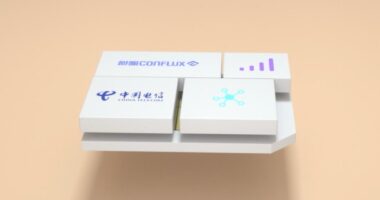Brokers from Orbisolyx dive into this topic as billionaire hedge fund manager Philippe Laffont makes a bold shift in his semiconductor strategy, reducing exposure to AMD and channeling fresh capital into Arm Holdings (NASDAQ: ARM), a company he believes could quadruple in market value by 2030.
The move reflects a deep conviction in the architectural backbone of the artificial intelligence (AI) revolution rather than the GPU race itself, signaling where sophisticated capital sees the next phase of opportunity within the semiconductor value chain.
Laffont Trims AMD Exposure After Multi-Year Rally
Philippe Laffont’s hedge fund, Coatue Management, has been a standout performer among long-term growth investors. According to recent SEC filings, the fund outperformed the S&P 500 by nearly 95 percentage points over the past three years.
However, Laffont has cut 89% of his position in Advanced Micro Devices (NASDAQ: AMD) after holding it as one of his top three public equity positions during the height of the AI-driven GPU boom in 2023.
Coatue also reduced its stake in Nvidia (NASDAQ: NVDA) by 77% since early 2023, although it added back a small portion last quarter. Despite AMD’s strong rebound in late 2025, fueled by its high-profile deal with OpenAI to supply up to 6 gigawatts of GPUs, Laffont appears to be pivoting toward what he considers the next structural growth opportunity in AI computing.
The New Bet: Arm Holdings
One of Laffont’s most significant moves last quarter was a new long-term position in Arm Holdings (NASDAQ: ARM), the British semiconductor IP company whose designs power much of the world’s mobile and, increasingly, data center infrastructure.
Laffont projects Arm’s market capitalization could rise from about $179 billion today to roughly $787 billion by 2030, a potential 340% gain over five years.
Unlike AMD and Nvidia, Arm doesn’t design or sell chips. Instead, it licenses its energy-efficient chip architecture to other manufacturers. Its technology underpins processors from Apple, Amazon, Nvidia, and Qualcomm, giving it a unique leverage point in the global compute stack.
Arm’s Expanding Role in AI Data Centers
Arm has rapidly expanded from smartphones into AI data center applications, with over 70,000 enterprises now using its designs, a 14-fold increase since 2021.
Notably, Nvidia’s Grace CPU, which powers its Hopper and Blackwell platforms, is built on Arm’s intellectual property. This highlights Arm’s expanding relevance to high-performance computing, even if Nvidia recently partnered with Intel on new x86-based systems.
Arm’s licensing and royalty-based business model is also gaining traction. In the first quarter, royalty revenues rose 25% year-over-year, driven by the adoption of its Arm v9 architecture, which commands higher royalty rates than previous generations.
This trend could yield durable top-line and margin growth in the coming years, key reasons Laffont believes Arm’s valuation can continue expanding despite its already premium multiple.
Valuation and Risks
While Arm’s growth narrative remains compelling, its current valuation is notably stretched, with shares trading near 100× forward earnings, leaving limited room for error. Analysts caution that any slowdown in data center adoption or royalty growth could trigger sharp valuation compression. Additional competitive pressures from x86 (Intel) and RISC-V open-source architectures also pose potential headwinds.
Nevertheless, for long-term investors like Philippe Laffont, the structural significance of Arm’s architecture in AI compute infrastructure offers a substantial runway for monetization, potentially justifying the premium despite near-term execution risks.
The Orbisolyx Take
Laffont’s pivot reflects a broader institutional mindset shift from owning AI hardware producers to owning the intellectual property enablers behind them.
While AMD’s deal with OpenAI underscores its competitiveness in the GPU market, Laffont’s focus on Arm suggests a belief that energy efficiency, licensing scalability, and ecosystem dominance will be the key differentiators in the AI hardware race.
For investors, Arm remains a high-conviction, high-valuation play that offers long-term potential but demands patience and risk tolerance.
Before buying, however, analysts emphasize considering diversification within the AI hardware stack, where alternative holdings may present stronger value asymmetry at current levels.
Summary
Philippe Laffont’s strategic rotation out of AMD and into Arm Holdings marks a notable pivot from betting on GPU performance cycles to embracing the foundational architecture shaping the next era of AI data centers. This transition highlights his forward-looking investment philosophy, prioritizing infrastructure-level innovation over short-term hardware gains.
More importantly, it reinforces Laffont’s reputation for spotting technological inflection points well ahead of market consensus, positioning his portfolio to benefit from the structural evolution of AI computing ecosystems rather than their cyclical momentum.








